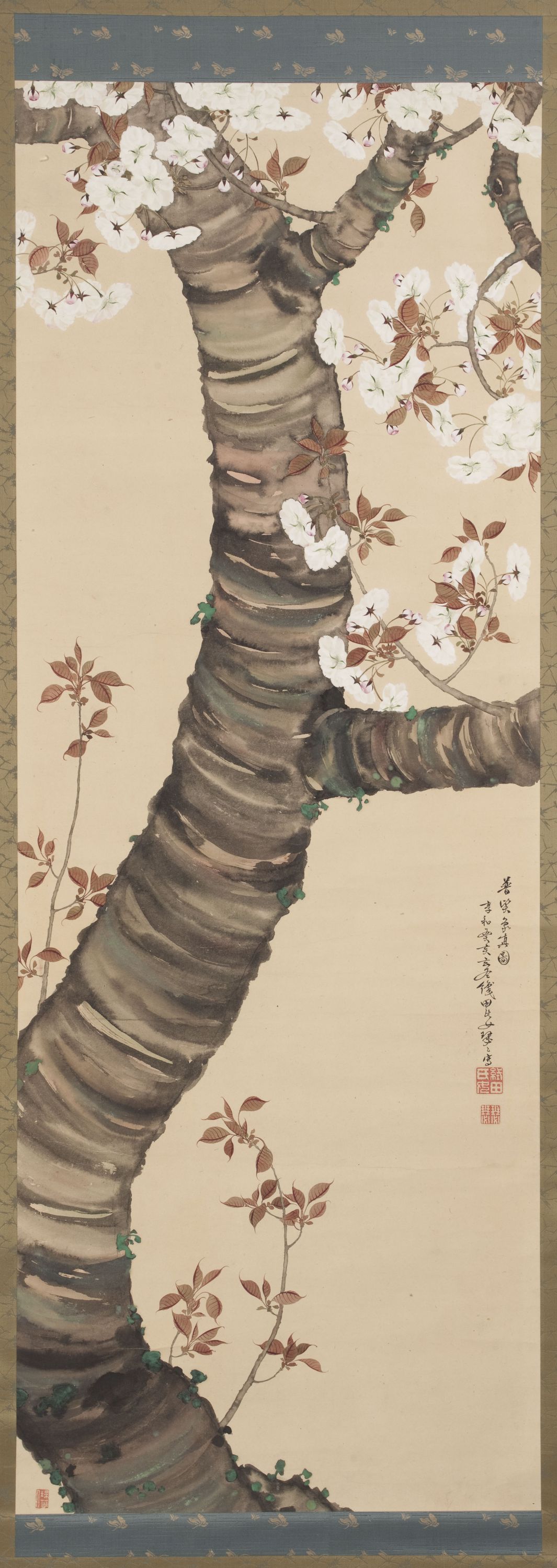
Cerisier en fleur
Soie, Encre, Encre de couleur
Peinture
Signature et sceaux : "Fujenzô shinzu, Kyôwa Mizunoto-i Gentô" " Oda-shi Onna Shitsuitsu-sha". Sceaux : "Oda-shi in", "Shihitsuhitsu", "Sôkajin"
Don manuel : Société des Amis du musée Cernuschi
M.C. 2012-1
This bold, large-scale composition is representative of the artist’s work. Its powerful effect is heightened by the lively treatment of the tree bark, rendered with semi-circular strokes of the brush, characteristic of Oda Shitsuhitsu’s style. Specialised in flower paintings, she composed her works with fragmentary elements of a plant, depicted close up (taiga). While her sense of botanic detail and observation belongs to a form of pictorial realism with a perceptible Western influence, her style of composition is directly inherited from the decorative painting schools of the 16th century, such as that of the master Kanō Eitoku (1543-1590), creator of taiga.
Oda Shitsuhitsu was one of the rare women painters to gain prominence in the Edo period. Born in Ōmi province (present-day Shiga prefecture), she was a descendant of Oda Nobusada, the ninth son of the warrior Oda Nobunaga (1534-1582), enabler of the reunification of Japan and a great patron and lover of the arts. She became active as a painter in around 1796 as a pupil of Mikuma Rokō, herself a gifted painter. She settled in Kyōto, where she married Ishida Nobuaki. Widowed at the young age of 35, she returned to her native province and became a nun.